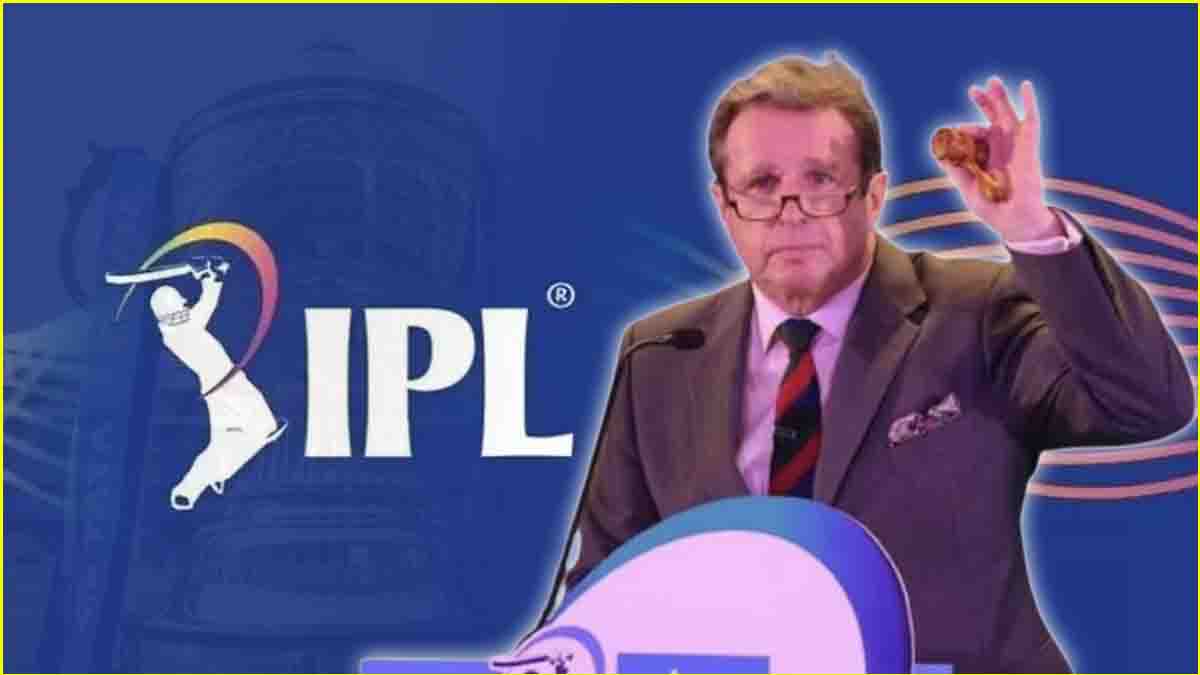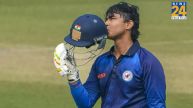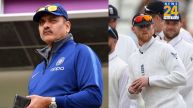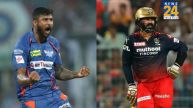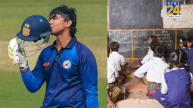The former IPL Auctioneer, Richard Madley, reflects on his memorable IPL auction experiences during an exclusive interview with Aditya Mallick and Akshat Mittal of News24, highlighting key moments like the auctions of Shane Warne and MS Dhoni in 2008. He shares insights into his auctioneering style, shaped by family influence and the IPL’s evolution, particularly with the growing reliance on analytics. He envisions the IPL’s continued growth, potentially expanding into new markets like England and the U.S.A.
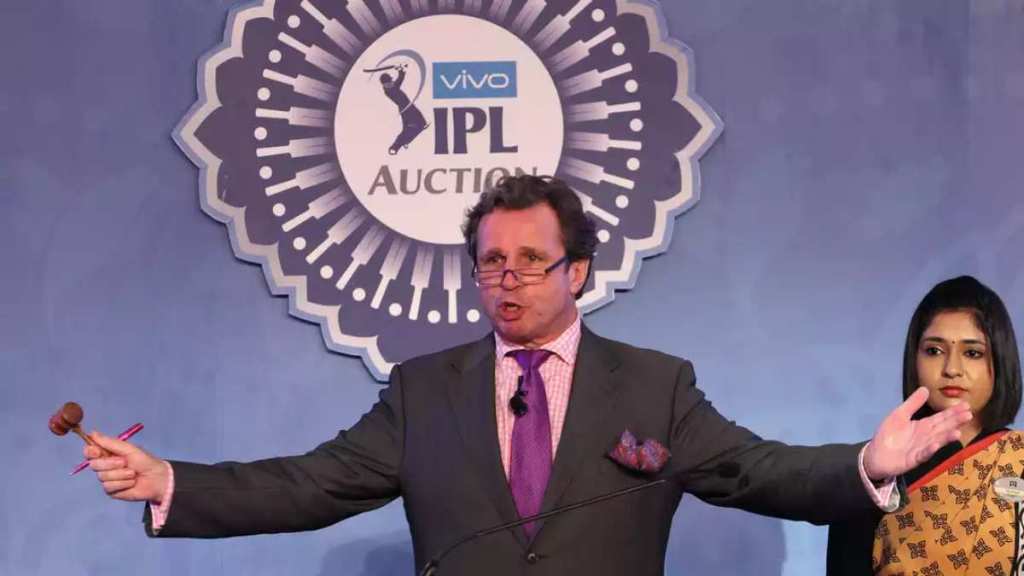
What’s The Most Memorable Moment You’ve Experienced During These Auctions?
“Well, the most memorable period of the IPL auctions must have been the very first auction, IPL 1 in the Oberoi Hilton ballroom back in Mumbai in February 2008. That was a day of the unknown. Nobody knew what was gonna happen that day. I’d met the owners the night before. I’d obviously met the administrators. I’d met Lalit Modi and IMG. And there was a sense of the unknown”.
“There was excitement and there was expectation, but there were some nerves. And it wasn’t until I got on stage that day, that morning, at about 11 o’clock, that I banged my hammer, my famous hammer, which of course never goes too far from my side. Good morning, ladies and gentlemen, and welcome to the IPL player auction. And that was it. It started and all of a sudden the first big player to come out of the bag was Shane Warne and he had a base price of 450,000 US dollars when we sold in dollars, not in rupees in those days”.
“He sold to the Rajasthan Royals, you know, which actually turned out to be an amazingly astute purchase on behalf of Manoj Badali. The game of cricket changed forever at that moment. If you’re going to put your finger on one moment in cricket history when the game changed forever, I really think it was when my hammer came down for Shane Warne. And then only minutes later, of course, the next player out of the bag, Mahendra Singh Dhoni“.
“Well, if I’d been unsure that things had changed with Shane Warne, I was convinced. When the hammer came down for MS Dhoni to play for the Chennai franchise (Chennai Super Kings), that’s when I was convinced cricket would never be the same again”.
You’ve Often Been Praised For Your Skill In Maintaining The Rhythm And Energy Of The Auction. How Did You Develop Your Unique Style As An Auctioneer?
“Well, my father was an auctioneer, My father-in-law was an auctioneer and therefore I started very, very young in the business. So my father, who was an auctioneer of property primarily, but he also sold art and antiques, towards the end of one of his auctions would say to me, right, I’ll hand over now to Richard who will complete the sale. And I stood up there on a pair of stepladders. I remember it very well. I was in a garage”.
“Selling the contents of a garage at the end of a country house sale. And that’s where I put into practice what I’d been learning from my father since I’d been a small boy. You learn by watching. You borrow from other auctioneers. That’s where you develop your… You add to that your particular style. So I look at the IPL style, which I created especially for that particular auction 16 years ago”.
“Whereby I was very clear in communicating to not just the bidders, but to the audience watching or listening on TV or mobiles, what was happening in the room. So I was very, very clear. And it’s interesting that when Hugh Edmeads (Former IPL Auctioneer) took over from me, he used exactly the same technique. And I’ve watched Mallika (Mallika Sagar, current IPL Auctioneer) last year, and she is using the same format”.
“That I introduced for the IPL. Now the energy is something that you have within you. Selling 500 lots or 600 lots is not a lot of lots to an auctioneer. I’ve conducted auctions where there have been 1,000, 1,200, 1,500 lots. But normally they would be a piece of furniture, a piece of silver, a piece of glass, and you move along. Whereas in the IPL, you’ve got to give the attention. To every single item, every player who comes up to the auction. And of course, to the bidders in the room, you can’t afford to make a mistake. But it’s a lot of energy”.
“The momentum is something that you develop over time. And an auctioneer should get into a rhythm. And when he gets into the rhythm, then the buyers get into the rhythm. I think the audience watching on television what they gets into that rhythm as well. They congratulated me on keeping it lively and keep it energetic. Mind you, at the end of day two, I am exhausted. Well, Twitter has been showing some of the past auctions that I took”.
“You know, I took 11 auctions in 10 years. And for me, it’s a real trip down memory lane. And I can remember most of those players that I offered. But I can also see that the energy that I was giving and that momentum, and you try and get into a swing whereby the bids bounce off one another, and you’re not having to appear desperate or calling for them. There is that momentum that comes from the bids now with KKR at 500 now, I’ve got 550 bids now from the RCB, so back to you at 600, KKR and you’re almost chanting a little bit of a song. I am a singer and therefore perhaps that also helps as well”.
Are There Any Particular Interactions Or Conversations You Remember Fondly From Your Time As An Auctioneer?
“Well, I don’t get to meet many of the players before the auction. When we decided to hold the first-ever IPL auction, we just thought about the concept of having the players in the room, standing beside me on the stage. And for a short while, we thought it might be interesting. And then we actually thought it could be a little bit awkward. Imagine player A selling for a huge amount. For a round of applause and then his best friend comes on stage and he doesn’t sell”.
“Imagine that, So we thought that could have been a little bit awkward. So I hadn’t actually met any of the players when I conducted the first IPL auction and then it was my privilege then when I came to the first IPL tournament. I went to the first-ever game. You probably can’t remember it but it was a fantastic game there in Bangalore between the RCB and KKR. and the present England cricket coach Brendan McCullum set the world alight that evening and that was the perfect launch pad for this new tournament”.
“And just before the tournament started, I went into a side room to be introduced to none other than Mahendra Singh Dhoni, who had come to the first game. There was a ceremony before the opening all came to Bangalore just for the evening and then flew back afterward. And I was just touched by his humility, how humble he was, how gracious, how unchanged he was by fame or fortune. I just thought he’s just struck me as just a thoroughly nice guy. And he was very grateful. He shook my hands and somebody said to him, no, you must meet Mr. Madley, he’s the man who made you a millionaire”.
“Well, He probably was a millionaire beforehand anyway, but anyway, we added to that and he was just very, very grateful. And you find that with many cricketers. There are no egos involved. Some men and women love the game. They’ve grown up playing it. So I would say that Mahendra Singh Dhoni was a privilege. It was also great to meet Freddie Flintoff (Andrew Flintoff). Freddie came over for a season and played for CSK”.
“So he was in the auction in IPL too. And I met him when, of course, you remember the tournament was transferred to South Africa. And I went to Port Elizabeth to watch Chennai Super Kings play RCB. So coincidentally, this was from Freddie Flintoff (Andrew Flintoff) against KP (Kevin Pietersen). So it was the battle of the two English giants. Freddie could not have been more friendly. When I met him after the game…He was so grateful that I had got him a great price in the auction and he bought me a beer”.
“Kevin Pietersen wasn’t really that interested. He didn’t actually know who I was. And he treated me with a little bit of disdain until someone said to him, you do realize that this man made you over a million dollars, Kevin. All of a sudden, he was very nice to me”.
“But generally, The players I meet, you know, from Gautam Gambhir right the way through, Yuvraj Singh and Ravichandran Ashwin, they’re just great people. And it’s lovely to meet them afterward. I’m glad they’re not standing beside me in the auction room because that could make me and them a little bit nervous. But I’m a cricketer myself. I think there’s a great affinity between cricketers, whether they’re playing international cricket for India or England or for my local village here in England”.
With The Growing Influence Of Analytics, Do You Think The IPL Franchises Rely More On Statistics And Metrics Now Compared To Your Earlier Years? How Has That Changed The Dynamics Of The Auction?
“There’s no doubt about it. The bidding techniques and practices employed in IPL1 were a little bit immature in the nicest way. It was a new concept altogether. There hadn’t been the research done, the statisticians hadn’t done their homework, and the analysts weren’t even employed. I don’t even think there was one analyst in the auction that I can recall on that first day. So things have improved. They come on by leaps and bounds”.
“The statistics have influenced the bidding and the scouting system has brought some new players. Unknown players to the marketplace. And the teams themselves have become more and more sophisticated as every auction goes on. And you must remember, in the first-ever IPL auction, the teams didn’t even have names. They held up little polystyrene paddles to me that said Bangalore, Chennai, or Jaipur. So the players didn’t even have names. Sorry, the teams didn’t have names”.
“And the bidders in the room would have some more suits, some more T-shirts. It was a little bit of a mixed bag of what they were wearing. But of course, by the time IPL2 came along, everybody was branded in their team’s colors and we had flushing bidding paddles. They had statisticians, and advisors sitting beside them with laptops telling them how much to pay or what not to pay. And that has gone on continually for the last 14 years, and they’ve become more and more sophisticated”.
“They conduct mock auctions to practice in the run-up to the auction, and they go through the what-if scenarios. And I have made myself available to any of those teams. If they’d like me to come along and conduct a mock auction, that would be a pleasure”.
Terms Like ‘Paraded Like Cattle’ Have Been Used To Describe IPL Auction. What Would You Say To Those Who View The Process As Degrading?
“Yes, I have heard that said on a number of occasions. I’ve heard it likened to a slave market with cricket bats. And I say that is absolutely preposterous. Let me tell you this, I have yet to meet a cricketer anywhere in the world who has not wanted to be in the IPL auction. It is a cricketer’s dream. It is what they aspire to. I can assure you there’s nothing related to slavery or a cattle market going on there”.
“It is a very transparent open marketplace. And believe me, as you can tell by the numbers that have been whittled down this weekend to 574, there was another thousand who wanted to be in the auction. So I dismiss that thoroughly and I can assure you it’s a very happy environment to be in at the auction on the day and the players, especially if they sell, are extremely happy. Now, of course, you know, we have to say that there are downsides to the IPL auction. Not everybody can be a winner”.
“You know, you’ve got 574 players coming up this weekend, and there are only, I believe, 204, is it, playing slots. So straight away, do the math, you’re gonna have 500 disappointed players. And some players I know who are watching in Australia in the West Indies, in England, and are disappointed that their names don’t even get presented”.
“So they think they’re in the auction because technically they are. And they know that they’re going to be appearing in the lower set orders, perhaps on day two, by which time the auctioneer has maybe moved to the accelerated process. And the teams have done the majority of their buying. And therefore he will ask, or Malika will ask them to submit a list of those players that they want to be presented in the second part of the auction or re-presented if they’ve been unsold the first time around”.
“So there are many, many players whose names are in the auction, who have been told they’re going to appear, and their name doesn’t even get drawn out of that velvet bag. And they certainly are disappointed. But the IPL dreams are made and shattered on the auction rostrum that day”.
With The IPL Evolving, Especially With New Franchises Being Introduced, How Do You See The Future Of The IPL Auction? Are There Any Changes You Anticipate In The Years Ahead?
“Well, we had eight franchises for many years and we’re at 10 now. There is no reason why that could not be expanded. If the market takes another two or four teams, then of course the tournament expands. It becomes bigger, it becomes quite a challenge for the organizers to make it all work. As far as the auction is concerned, well, great, you know, there are more people in the room”.
“So I like that, you know, the fact that there’ll not be eight tables or 10 tables, there could be 12 or 14 tables. So Mallika will like that because she can then bounce from one table to the other to the other. In the SA20, which I now conduct, I just have six franchises in the room, which is fine, you know, those six franchises are you know, all teams I’m very familiar with, but it’s quite a small room in which to work”.
“The more franchises, and more teams in the auction room, then the more competitive bidding there will be and the more the auctioneer can move around the room and generate that excitement. So as far as the auctioneer is concerned, kind of the more the merrier”.
“I’m sure that we would welcome another two franchises, but you tell me the market’s gotta be able to support it. And of course, the tournament is of a certain length. It’s pretty crowded at the moment. I’m not sure how you would get that many extra games played in that short time. Right. So my final question for you. You have seen the IPL group from its very inception”.
How Do You Personally Feel About The IPL’s Role In Globalizing Cricket, And What Do You Think The Next Decade Holds For The League?
“The concept of the IPL auction was dreamt up, ironically, not as a cricket match. It was dreamt up and discussed at a tennis match, at a tennis tournament at Wimbledon in July 2007 when Lalit Modi, the brains behind the whole concept, was talking to Andrew Wildblood about this idea he had to revolutionize world cricket by creating a franchise-based cricket tournament to be played during a relatively short period, six, eight weeks, in India and open to the whole of the world of cricketers”.
“Now there had been attempts before to stage such tournaments which hadn’t been that successful. But Lalit had a belief that the market was truly global, and had the potential to be truly global. Hold the tournament in India. You rely on Indian players for the majority of the players but bring in the international players. But it has the potential to be global. And he was very, very, very clear in his thinking early on. And there were, Believe me, there were many people who thought he was being over-optimistic. But in a very short space of time, you know, the initial success was huge. And the tournament has just kept growing. And so much so now that IPL is a truly global brand”.
“Yes, it’s played in India and is revered by an Indian audience, but it is followed right across the world. And I think it can only get bigger and better. I do believe, that there are players now who are setting out to make it their career. They’re going to focus on playing that short format of the game. The franchises are global brands in themselves. I am just waiting for the moment that the IPL can move to England”.
“There’s a window there for the IPL to be played in at Lords, at the Oval, at Edgbaston, Headingley during maybe July or August. That brings the game to England. We’d like to see Indian players being allowed to play over here in the tournament. America, you know, I spent 10 years in America. I thought the American sports market was, is overcrowded. You know, they seem to have plenty of sports of their own there. Yet there is a deep belief that the IPL can establish itself in the American market”.
“So the sky is the limit. You know, what started as just an idea from one man, a visionary of his time, but with the support of Andrew Wilder from IMG and the rest of the people who took the risk. Those eight franchise holders took a gamble. It was a punt they took and if you notice they’ve all hung in there. Nobody’s sold a franchise yet. So they must be happy now with the investment. Which just started as a way of distributing a few players, has become almost as big as the opening ceremony itself. And there is as much interest now on auction day, almost on the opening day of the tournament.”

